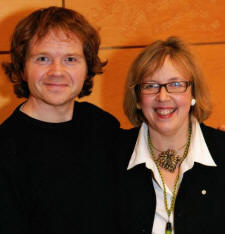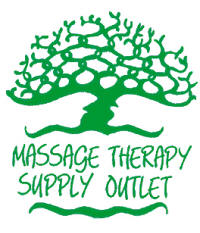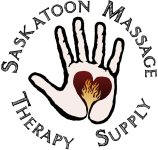|

Community,
Commentary and Curriculum
for Massage Therapists
Health Care: Are We In or Are We Out?
Posted:
September 29, 2008 Feedback
comment@mtcoach.com
Originally in this segment I was going to report on the declining
manufacturing centres and effects on extended health benefits,
and the obstacles in working with auto insurance and WSIB.
However, since the Canadian federal election is this month (and
the U.S. Election for our American neighbours in November) I
thought it apropos to talk about government impact on your
massage practice.
 Canadian
Manufacturers and Exporters and the Retail Council of Canada are
strongly urging the government to harmonize government sales tax
(GST) and provincial sales tax (PST). This already exists in a
number of provinces, and means that massage therapy services of
therapists earning above $30,000/year in much of Canada would be
subject to 13% taxes. Canadian
Manufacturers and Exporters and the Retail Council of Canada are
strongly urging the government to harmonize government sales tax
(GST) and provincial sales tax (PST). This already exists in a
number of provinces, and means that massage therapy services of
therapists earning above $30,000/year in much of Canada would be
subject to 13% taxes.
Massage Therapy services are not exempt because it does not meet
the criteria of a) covered under provincial medicare in two or
more provinces or b) regulated in 5 or more provinces (we
currently have 3 regulated provinces).
"Harmonization of the provincial retail sales taxes (PST)
with the GST in the remaining provinces of British Columbia,
Manitoba, Saskatchewan, Ontario, and Prince Edward Island may be
emerging as a real possibility. Some commentators have suggested
that the likelihood of some form of harmonization in those
provinces in the next two to three years has been crystallized
by a combination of political and economic factors--the rise in
the Canadian dollar, the challenges faced by Canadian
manufacturers and exporters, and GST rate reductions."1
What does this mean for massage
practitioners? The client/patient will pay more, possibly affecting their utilization of massage
therapy. In Canada comparable services - chiropractic and physiotherapy
- are
exempt from GST & PST, which puts massage therapy at a decided
market disadvantage.
I suspect many therapists would be afraid to hike
their rates and will instead absorb the tax into existing fees...reducing
their profit. A direct impact to their bottom line.
In his commission’s famous report, “Building on the Future of
Health Care in Canada”, Roy Romanow outlines a number of changes
to preserve and rebuild the health care system. Romanow makes
particular reference to investing in health care providers, and
the need for integrated teams in providing care.
“One of the best ways of ensuring
that health care providers are able to work effectively in new,
more integrated settings is to begin with their education and
training. Education programs should be changed to focus more on
integrated, team-based approaches to meeting health care needs
and service delivery.”3
Romanow’s recommendations focus on rural and remote access,
diagnostic services, removing obstacles to primary health care,
home care and catastrophic drug coverage. Massage therapy is
not mentioned in this 392 page report.
In
The ABC’s of Allied Health Professionals, a publication of
the Niagara Health System (NHS), a large number of health
professional vocations are identified and described as working
within the health care system. Audiologist, biomedical
technologist, chiropodist, kinesiologist, pharmacist,
physiotherapist and psychotherapist are some of the professions
highlighted and described. The publication cites “there are
currently 500 OPSEU members of the Hospital Professional
Division working within the NHS”. Massage therapist is not
listed among them.
In
2004, chiropractic3 and physiotherapy services were
de-listed from the OHIP (Ontario medicare) funding schedule. It
appears the primary populations massage therapists serve –
rehabilitation, spa services, the treatment of physiological
stress and occupational strain – will not be supported by
provincial
government health care funding.*
* the Green Party supports expanding
provincial health care funding to include alternative
medicine. Green Party Leader Elizabeth May pictured here.
If the massage therapy industry does not take steps to be
included in the primary health system, it will continue to rely
on patients that pay out-of pocket with after-tax dollars.4
This works fine in strong economic times, but can be
significantly affected in economic down-turns.
In our next segment,
we look at the stability of extended health care benefits, auto
insurance and worker's compensation.
© 2008, Donald Q. Dillon, RMT. All Rights
Reserved.
No part of this article may be reproduced, stored
in a retrieval system, or transmitted in any form or by any
means, electronic, mechanical, recording or otherwise, without
the prior written permission of the author.
Feedback
comment@mtcoach.com
1 http://www.ctf.ca/articles/News.asp?article_ID=3550
2 Romanow, R: Building on
Values: The Future of Health Care in Canada. November 2002.
Executive Summary, p xxvii
3
http://www.chiropractic.on.ca/ChiropracticCoverage/CoverageOverview.aspx
4
Dillon, D: Looking into the Future: Trends Affecting the Massage
Therapy Industry in Ontario. Body Politic, Vol 2, # 3 pp 6-8
See MTCoach Live
Return to Home Page
Buy Don's
books at:
|












 Canadian
Manufacturers and Exporters and the Retail Council of Canada are
strongly urging the government to harmonize government sales tax
(GST) and provincial sales tax (PST). This already exists in a
number of provinces, and means that massage therapy services of
therapists earning above $30,000/year in much of Canada would be
subject to
Canadian
Manufacturers and Exporters and the Retail Council of Canada are
strongly urging the government to harmonize government sales tax
(GST) and provincial sales tax (PST). This already exists in a
number of provinces, and means that massage therapy services of
therapists earning above $30,000/year in much of Canada would be
subject to 
